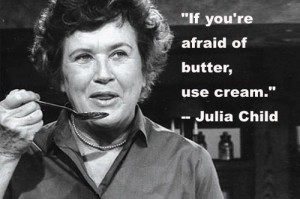I’ve been promising a series on acne and rosacea for almost two years, but I’ve had trouble working up enthusiasm for it. The problem is that Pubmed has 12,966 papers on acne and 2,587 papers on rosacea, most of those papers are of poor quality, and it is painful to sift through the dross in search of gold.
Fortunately, Seppo Puusa, who blogs at the Acne Einstein, has offered to help. Seppo’s a very smart guy and I thought a conversation between us about acne and rosacea might be an interesting way to do the series. Seppo has just written a book called Clear for Life: Science-Based Natural Acne Treatment Program, which looks like a terrific guide to overcoming acne. In this first post in our acne and rosacea series, Seppo gives us his overview of acne. Here’s Seppo!
Does it ever feel like acne is just maddeningly confusing? That it just comes and goes without making any sense? It’s almost as if acne is not one disease but a combination of many diseases. For example one person gets acne from eating gluten, while another claims she can eat whatever she wants but breaks out every time she uses certain skin care products. A third person puts the blame on stress. Another person said zinc supplements helped her to get clear.
Is there a way to make sense of this, to reconcile all these seemingly separate causes? I believe there is. And in this post I’ll do my best to give you a framework for understanding acne. Something that ties all these seemingly separate causes together and helps you to make sense of your acne.
Deconstructing acne
In Tim Ferris’s latest book The Four Hour Chef he explains how to use deconstruction to learn a new skill. Basically you boil the skill down to its bare essentials. In acne these are inflammation and hormones (insulin to be more specific).
Let me start by explaining the pimple formation process. Looking at what happens in your skin is important because, surprisingly, understanding this helps you to understand how diet, gut issues, stress and other things can cause acne. Acne is more than skin-deep, but it still happens at the skin.
In acne, skin cells produce too much keratin, a protein that’s the key structural component of your skin, hair and nails. In the skin it holds skin cells together. Normally as skin cells die they separate and are pushed out of the hair/skin follicle (I’ll just call this a “skin pore” from now on). But the excess keratin makes it harder for the dead cells to separate so they are shed in larger lumps. [1]
These lumps of dead skin cells can block the skin pore, and this block prevents sebum from flowing out. One study showed that acne-prone skin produces about 3 times more sebum than normal skin [2], though other studies have found somewhat smaller differences [3, 4]. Now this torrent of sebum flows into the blocked pore and has nowhere to go. So the skin pore expands, like what happens when you blow into a balloon. Oxygen content drops in the blocked pore, and this helps the bacterium P. Acnes to thrive in the blocked pore [5]. The rest you probably know: the immune system responds and causes inflammation in the area.
This process has two breakpoints — points at which we can intervene to prevent or lessen acne. These are:
- Excess keratin production
- Excess sebum production
Counter either, or both, of these and your chances of getting acne go down dramatically. And here is where inflammation and hormones comes into play. Because research shows that inflammation in the skin and hormonal factors are the key drivers in both excessive keratin and sebum production.
Inflammation
Many people think of acne as bacterial disease, but more than anything it’s an inflammatory problem. Many researchers now believe that inflammation in the skin is the trigger that kicks off the whole process. Studies have shown that inflammation is present in the very earliest stages of a pimple, even before P. Acnes bacteria colonizes the skin pore [6, 7]. Cell culture studies also show that inflammatory cytokines increase both sebum and keratin production [1,8]. Finally, several studies have shown that antioxidants, whether topical and supplemental, can be as effective as benzoyl peroxide or antibiotics in treating acne [5,9]; this is consistent with the inflammatory view because oxidative stress can trigger inflammation.
Hormones
Acne has been conclusively linked to elevated levels of androgens, insulin, and insulin like growth factor 1 (IGF-1). These hormones stimulate sebum production and there’s some research to suggest they also affect keratin production. [1]
The relationship between acne and hormones is quite complicated. Androgens, or male sex hormones, are arguably the primary hormones affecting the skin. It has been shown that acne does not occur in people with inactive androgen receptors in the skin [10].
However, acne patients do not necessarily have higher levels of androgen hormones than people with clear skin. A portion of acne patients seem to have higher levels of some androgen hormones, but this is far from universal. Rather, acne-prone skin seems to be excessively sensitive to androgen hormones.
Insulin and IGF-1 are key hormones in acne. That’s because while androgens mediate lot of the effects on the skin, insulin and IGF-1 are the hormones you have the most control over. I like to call insulin a booster hormone in acne. And where there’s insulin, there’s also IGF-1. That’s why I group these two hormones together. [11]
Insulin and IGF-1 can stimulate sebum production on their own, but they also stimulate the release of androgen hormones from the liver and can increase the skin’s sensitivity to androgen hormones. That’s why studies show low GI diets can help with acne, and why milk can be so bad for the skin. [1, 11]
How sebum production drives antioxidant demand
The skin is the most exposed of all the organs. It’s frequently exposed to UV radiation, ozone from air pollution, bacteria, dust and other ‘inflammatory insults’. So the skin needs constant protection, and that protection comes in the form of antioxidants. In the skin the antioxidants are primarily in sebum. [12]
Research shows a tight correlation between sebum production and vitamin E secretion by the skin [13]. More specifically vitamin E secretion correlates with squalene secretion. Squalene is a fatty acid and a part of sebum. It really looks like the body uses vitamin E to protect squalene in the skin. When squalene oxidizes it turns into squalene peroxide, a highly inflammatory and comedogenic fatty acid. Animal studies show that applying squalene peroxide on the skin causes acne, and the severity of acne is linked to the degree of oxidation of squalene [5].
So the more sebum your skin produces the more antioxidants it requires. There’s good evidence to show that the antioxidant system in acne patients just can’t cope up with this increased demand. For example comparing skin and blood levels of several antioxidants shows significantly lower levels in acne patients than in people with healthy skin. [5, 9]
This is the factor that, I believe, ties together all those seemingly disparate factors that can trigger or relieve acne:
- Gut problems increase systemic inflammation and deplete antioxidant reserves leading to more acne.
- Stress triggers the release of neurotransmitters (such as substance P) that can increase inflammation in the skin leading to more acne [1].
- Diet can induce or relieve inflammation leading to more or less acne. Diet also affects insulin levels.
- Supplementing with zinc or other nutrients can provide antioxidants which lessen acne [14].
- Candida and other pathogens in the skin cause local inflammation which can induce acne.
Conclusion
Acne is a very complicated condition and I don’t for one second pretend that this simple framework perfectly explains every case. Individual differences exist, and things get much more complicated when we get down into details. But I do believe it’s a good big picture overview of what causes acne and hopefully clears some confusion surrounding it.
Most importantly, this framework is broadly actionable. It gives you a systematic way to approach acne. Anything you can do to lower insulin and inflammation (both systemic and local in the skin) can help in acne.
Just remember, where there’s insulin there’s oily skin, and where there’s inflammation there’s acne.
References
- Ichiro Kurokawa, et al. New developments in our understanding of acne pathogenesis and treatment. Experimental Dermatology. Volume 18, Issue 10, pages 821–832, October 2009. http://onlinelibrary.wiley.com/doi/10.1111/j.1600-0625.2009.00890.x/full
- Harris HH, et al. Sustainable rates of sebum secretion in acne patients and matched normal control subjects. J Am Acad Dermatol. 1983 Feb;8(2):200-3. http://www.ncbi.nlm.nih.gov/pubmed/6219137
- S-W. Youn, et al. Does facial sebum excretion really affect the development of acne? British Journal of Dermatology. Volume 153, Issue 5, pages 919–924, November 2005. http://onlinelibrary.wiley.com/doi/10.1111/j.1365-2133.2005.06794.x/full
- Apostolos Pappas, et al. Sebum analysis of individuals with and without acne. Dermatoendocrinol. 2009 May-Jun; 1(3): 157–161. http://www.ncbi.nlm.nih.gov/pmc/articles/PMC2835908/
- Whitney P Bowe, Alan C Logan. Clinical implications of lipid peroxidation in acne vulgaris: old wine in new bottles. Lipids in Health and Disease 2010, 9:141. http://www.lipidworld.com/content/9/1/141
- Eady E, et al. Is Acne an Infection of Blocked Pilosebaceous Follicles?: Implications for Antimicrobial Treatment. American Journal of Clinical Dermatology. July/August 2000 – Volume 1 – Issue 4 – pp 201-209. http://adisonline.com/dermatology/Abstract/2000/01040/Is_Acne_an_Infection_of_Blocked_Pilosebaceous.1.aspx
- Anthony HT Jeremy, et al. Inflammatory Events Are Involved in Acne Lesion Initiation. Journal of Investigative Dermatology (2003) 121, 20–27; doi:10.1046/j.1523-1747.2003.12321.x. http://www.nature.com/jid/journal/v121/n1/full/5601829a.html
- Monica Ottaviani, et al. Lipid Mediators in Acne. Mediators Inflamm. 2010; 2010: 858176. http://www.ncbi.nlm.nih.gov/pmc/articles/PMC2943135/
- Bowe WP, et al. Acne vulgaris: the role of oxidative stress and the potential therapeutic value of local and systemic antioxidants. J Drugs Dermatol. 2012 Jun;11(6):742-6. http://www.ncbi.nlm.nih.gov/pubmed/22648222
- J Imperato-McGinley, et al. The androgen control of sebum production. Studies of subjects with dihydrotestosterone deficiency and complete androgen insensitivity. The Journal of Clinical Endocrinology & Metabolism February 1, 1993 vol. 76 no. 2 524-528. http://jcem.endojournals.org/content/76/2/524.short
- Melnik BC, Schmitz G. Role of insulin, insulin-like growth factor-1, hyperglycaemic food and milk consumption in the pathogenesis of acne vulgaris. Exp Dermatol. 2009 Oct;18(10):833-41. Epub 2009 Aug 25. http://onlinelibrary.wiley.com/doi/10.1111/j.1600-0625.2009.00924.x/full
- Jens J. Thiele, Swarna Ekanayake-Mudiyanselage. Vitamin E in human skin: Organ-specific physiology and considerations for its use in dermatology. Molecular Aspects of Medicine. Volume 28, Issues 5–6, October–December 2007, Pages 646–667. http://www.sciencedirect.com/science/article/pii/S009829970700057X
- Mauro Picardo, et al. Sebaceous gland lipids. Dermatoendocrinol. 2009 Mar-Apr; 1(2): 68–71. http://www.ncbi.nlm.nih.gov/pmc/articles/PMC2835893/
- Dreno B, et al. Multicenter Randomized Comparative Double-Blind Controlled Clinical Trial of the Safety and Efficacy of Zinc Gluconate versus Minocycline Hydrochloride in the Treatment of Inflammatory Acne vulgaris. Dermatology 2001, Vol. 203, No. 2 http://content.karger.com/ProdukteDB/produkte.asp?Aktion=ShowAbstractBuch&ArtikelNr=51728&ProduktNr=227730













Recent Comments